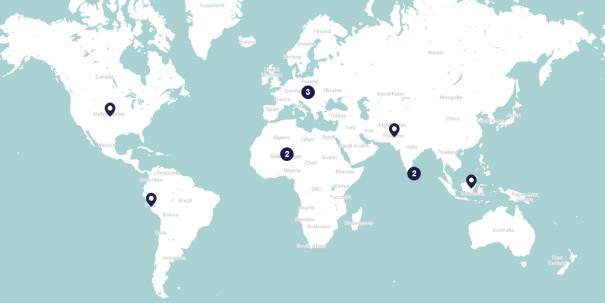
- Project summary
- 16 August 2019
Towards Economic and Sexual/Reproductive Health Outcomes for Adolescent Girls (TESFA)
- Author: CDavin
- Published by: Social Norms Learning Collaborative
Organisations involved
CARE, International Center for Research on Women (ICRW), Organization for Rehabilitation and Development in Amhara (ORDA), Family Guidance Association of Ethiopia (FGAE), and Birhan Research and Development consultancy (BRDC)
Summary
Toward Economic and Sexual/ Reproductive Health Outcomes for Adolescent Girls (TESFA) (2015-2017) aims to improve economic and sexual and reproductive health outcomes for ever-married adolescent girls in Ethiopia. To achieve this, TESFA improves girls' family planning knowledge, mobility, negotiation skills, knowledge of sexual and reproductive health, access to income, and reference group support. TESFA specifically challenges the norms that a married girl should be in the home and serve the family and that every decision should be made by a man, not a woman.
Social norms of interest
Gender roles/equity
Project components
TESFA built on CARE’s Village Savings and Loan Association (VSLA) model, where girls were organized into groups and program content was delivered primarily through peer facilitators. The program also directly engaged community members, including village elders, religious leaders, and health workers, who were recruited as a part of Social Analysis and Action (SAA) groups – also called “gatekeepers.” These adults received training in areas related to the main project goals through a peer education system similar to that used with the girls’ groups. Based on the SAA approach, the community groups of “gatekeepers” undertook critical dialogue and reflection on the factors that contribute to early and forced marriage. They supported role models and took action against early and forced marriage, and acted as liaisons between the program and the community, providing support to the girls’ groups.
Measurement
ICRW conducted an evaluation of TESFA, where researchers analyzed whether providing economic empowerment and sexual and reproductive health programming together or individually was more effective. TESFA participants separated into specific groups based on the type of training they received (economic empowerment only, sexual/reproductive health only, combined intervention with both, and a control group who received the combined curriculum after everyone else was finished). ICRW compared the relative effectiveness of each group’s approach in improving the economic empowerment and sexual and reproductive health outcomes for girls. The design also provided an opportunity to see the effect of each of these compared to a de facto “do nothing” scenario, where the girls did not receive any programming.
Behavioural outcomes
Intimate partner violence, sexual behaviours
Key findings
The evaluation found that the lives of married adolescent girls in the TESFA program improved significantly in economic, health and social terms. The changes included large gains in communication between the young wives and their husbands; decreased levels of gender-based violence; improved mental health among participating girls; increased investment in productive economic assets; improved knowledge and use of sexual and reproductive health services, including family planning; and increased social capital and support. The following groups are all important reference groups for girls: mother-in-law, parents, husbands, community leaders, peers of mother-in-law and husbands (neighborhoods, friends).
Attribution
© Cooperative for Assistance and Relief Everywhere, Inc. (CARE). All rights reserved.
CARE grants permission to not-for-profit organizations engaged in humanitarian activities to use, reproduce, adapt, and create derivatives of this work, in whole or in part, solely for noncommercial purposes in connection with such humanitarian activities. This work is not to be used for any other purpose or in any other manner, including for any advertising or other promotional purposes, without CARE’s prior express written consent. As a condition to CARE granting permission to reproduce this work, the following notice shall appear conspicuously with any and all copies, reproductions, or public displays of the work, in whole or in part: “Applying Theory to Practice: CARE’s Journey Piloting Social Norms Measures for Gender Programming. Copyright 2017 Cooperative for Assistance and Relief Everywhere, Inc. (CARE). Used by Permission.”
To contact the author of this methodology or tool, please contact Leigh Stefanik or Theresa Hwang.
Tools
